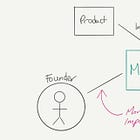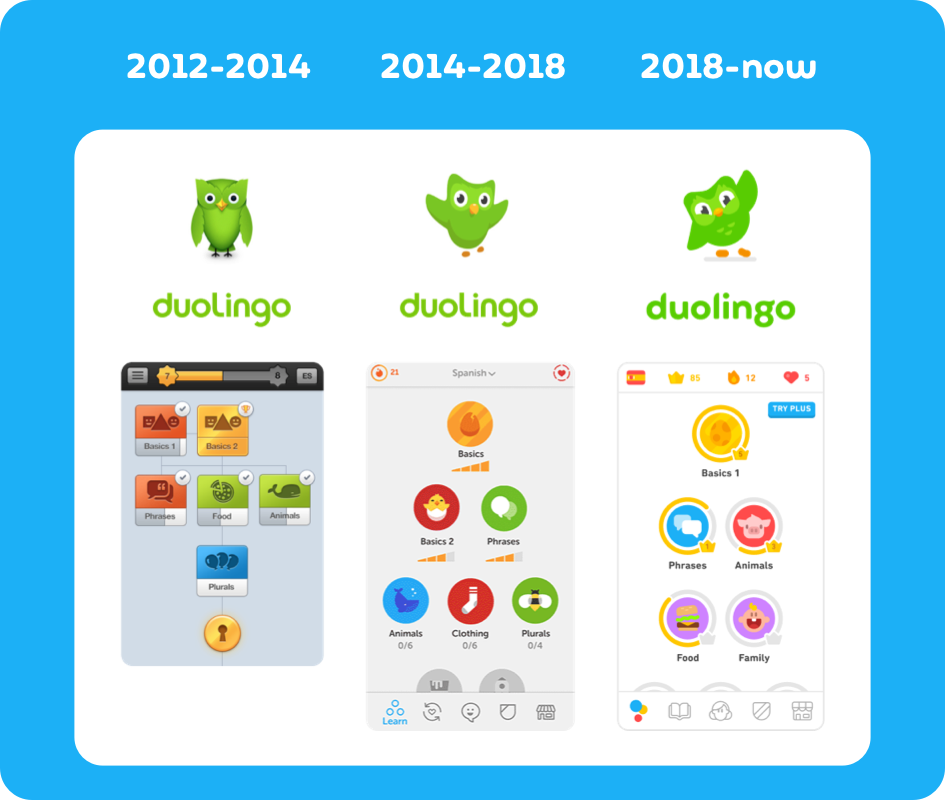From a simple idea to a $8.33 billion language-learning unicorn: What can we learn from Duolingo's startup journey?
They wanted to create an app that felt like a game, making it easy for anyone to learn a new language. That’s how Duolingo was born...
In 2011, two professors from Carnegie Mellon University, Luis von Ahn and Severin Hacker, had a simple idea: make language learning fun and accessible.
They wanted to create an app that felt like a game, making it easy for anyone to learn a new language. That’s how Duolingo was born.
But it wasn’t an instant success.
Duolingo started small, and the team faced many challenges.
Early users found the app too difficult and frustrating.
Instead of sticking to their original plan, the team listened to feedback and made changes. They simplified the lessons and made the app more intuitive.
🎢 Duolingo's journey in a nutshell
1. Founding and Initial Concept (2009)
Critical Moment: Luis von Ahn and Severin Hacker founded Duolingo with the idea of creating a platform that would combine language learning with crowdsourced translations.
Challenge: Convincing investors of the viability of a free language-learning app was difficult. Many were skeptical about how the platform would generate revenue while remaining free for users.
2. Securing Seed Funding (2011)
Critical Moment: Duolingo secured $2 million in seed funding from Union Square Ventures, allowing them to move forward with development.
Challenge: Before securing this funding, the founders bootstrapped the project, facing financial constraints that limited their ability to scale and develop the platform.
3. Platform Launch and User Growth (2012)
Critical Moment: Duolingo launched its platform to the public, quickly gaining traction and a growing user base.
Milestone: Duolingo had 300,000 people on the waitlist occurred in early 2012. This was just before the official public launch of the platform.
Challenge: Scaling the technology to handle a rapidly growing user base was a significant challenge. The team had to invest in infrastructure and improve their algorithms to ensure the platform remained reliable and effective.
RELATED POSTS:
4. Mobile App Launch (2013)
Critical Moment: The launch of Duolingo’s mobile app was a turning point, significantly increasing accessibility and user engagement.
Milestone: Within a year of launching the mobile app, Duolingo's user base grew to over 10 million users.
Challenge: Developing a mobile app that maintained the quality and effectiveness of the web platform required careful planning and resources. Ensuring a seamless user experience across devices was a technical challenge.
5. Pivot Away from Crowdsourced Translation (2014)
Critical Moment: Duolingo decided to pivot away from its original crowdsourced translation model to focus entirely on language learning.
Milestone: At this point, Duolingo had around 15 million active users, with the pivot contributing to more focused growth in language learning.
Challenge: The pivot meant abandoning a core aspect of the original business model, requiring a shift in strategy and a reevaluation of how to sustain and grow the business.
6. Monetization and Revenue Generation (2016)
Critical Moment: Duolingo introduced the Duolingo English Test, an affordable language certification, as a new revenue stream.
Milestone: The Duolingo English Test was introduced as a new revenue stream, with over 150,000 tests taken by the end of 2016. The platform had also reached around 20 million users by that time.
Challenge: Finding a monetization strategy that aligned with their mission of providing free language education was difficult. They had to balance generating revenue while keeping the core platform free for users.
7. Achieving Unicorn Status and Preparing for IPO (2020-2021)
Critical Moment: Duolingo reached unicorn status in 2020 with a $1.5 billion valuation and went public in 2021.
Milestone: Duolingo went public with an IPO price of $102 per share, and the stock surged, leading to a market capitalization of over $4 billion.
Challenge: The company faced pressure to maintain rapid growth and meet investor expectations while expanding its product offerings and maintaining its mission-driven approach.
📝 Lessons for Startups
1. Adaptability is Key:
Duolingo’s success came from its ability to adapt.
The team didn’t stick to their initial plan when they saw it wasn’t working. Instead, they made the necessary changes based on user feedback.
In the startup world, flexibility can make all the difference.
2. Focus on User Experience:
Duolingo prioritized making the app enjoyable and easy to use.
By focusing on user experience, they kept people coming back.
For any startup, keeping the user at the center of your product design is crucial.
3. Start Simple, Then Grow:
Duolingo began with a straightforward idea—learning languages through games.
They didn’t try to do everything at once. Starting simple allowed them to perfect their core offering before expanding.
This approach can help startups stay focused and avoid burnout.
Conclusion:
Duolingo’s journey shows that success isn’t about getting everything right from the start.
It’s about listening, adapting, and always improving.
Duolingo has not only built a product that resonates with millions but also navigated the challenges of growth and sustainability.
As you embark on your entrepreneurial journey, keep these lessons in mind to guide your path toward creating a lasting impact in your industry.
For more valuable startup and entrepreneurial insights:
Subscribe to Entreney Newsletter ⤵️
Join Entreney Community ⤵️
If you find this newsletter useful
♻️ Share to your network ⤵️
THANKS FOR READING!
- Entrepney








